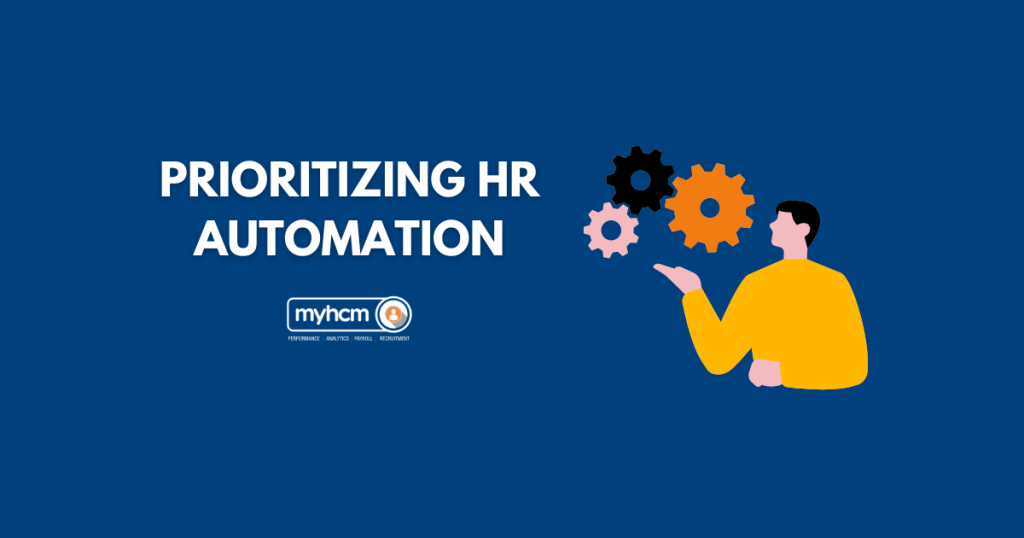Introduction
In today’s fast-paced business world, prioritizing HR automation is no longer a luxury, but a necessity. HR professionals are constantly juggling multiple tasks, from recruitment to payroll. Automating tasks offers a solution by streamlining repetitive processes. This allows HR teams to focus on strategic initiatives, such as employee engagement and talent development. This article explores the benefits, challenges, and best practices of prioritizing of it.
It involves using technology to automate routine HR tasks. This includes activities like onboarding new hires, managing employee data, and processing payroll. Prioritizing automating tasks frees up professionals from tedious administrative work. Consequently, they can dedicate their time to more strategic, people-focused initiatives. Modern HR automation software often incorporates AI and machine learning. These advanced technologies further enhance efficiency and decision-making.
Benefits of Prioritizing HR Automation
Prioritizing automating offers numerous benefits. Firstly, it streamlines workflows, improving efficiency and productivity. Secondly, it facilitates data-driven decision-making through analytics and reporting. Thirdly, it enhances the employee experience by simplifying processes like onboarding and benefits enrollment. Furthermore, Automating tasks helps ensure compliance with regulations. Finally, it reduces the risk of human error in critical HR functions.
Streamlined Workflows
Prioritizing automating tasks significantly streamlines HR workflows. For example, automated systems can handle tasks like screening resumes and scheduling interviews, saving HR professionals valuable time. Additionally, automated payroll processing reduces the risk of errors and ensures timely payments. Moreover, automated performance management systems facilitate regular feedback and goal tracking. Therefore, streamlining workflows through automating tasks improves overall organizational efficiency.
Data-Driven Decisions with HR Automation
Automating tools and software often includes built-in analytics tools. These tools provide valuable insights into HR data, enabling data-driven decision-making. Prioritizing automating tasks allows HR teams to identify trends, such as employee turnover patterns. Subsequently, they can implement targeted interventions to address these issues. Furthermore, data analytics can inform workforce planning and talent acquisition strategies. Thus, data-driven decisions based on automated software lead to better outcomes.
Enhanced Employee Experience via HR Automation
Prioritizing automating also enhances the employee experience. Automated onboarding processes make it easier for new hires to integrate into the company. Self-service portals empower employees to manage their benefits and access information independently. Additionally, automated training programs provide personalized learning experiences. As a result, a positive employee experience fosters engagement and retention.
Challenges of Prioritizing HR Automation
While prioritizing HR automation offers many advantages, there are also challenges to consider. One concern is maintaining the human touch in HR processes. Another challenge is ensuring data security and privacy. Furthermore, implementing new systems requires change management and employee training. Finally, integrating new tools with existing HR systems can be complex.
Overcoming Challenges in HR Automation
To overcome these challenges, it’s important to strike a balance between AI and human interaction. Prioritizing automating tasks should complement, not replace, human interaction in key areas. Robust data security measures and compliance with privacy regulations are essential. Comprehensive training programs can help employees adapt to new systems. Careful planning and collaboration can ensure seamless integration with existing infrastructure.
Best Practices for Prioritizing HR Automation
Prioritizing automating tasks requires careful planning and execution. Start by identifying key HR processes that would benefit most from automations. Select HR tasks automating tools that align with your organization’s needs and integrate with existing systems. Implement changes gradually and provide thorough training to employees. Regularly evaluate the effectiveness of your HR software initiatives and make adjustments as needed.
The Future of HR Automation
The future of HR automation is promising. AI and machine learning will play an increasingly important role in HR processes. Personalized employee experiences and enhanced self-service tools will become more prevalent. Ethical considerations and data privacy will be paramount. Prioritizing HR automation now will position your organization for success in the future.
Conclusion
In conclusion, prioritizing HR automation is essential for modern businesses. It streamlines workflows, enables data-driven decisions, enhances the employee experience, and ensures compliance. While there are challenges to overcome, careful planning and execution can maximize the benefits of HR automation. By prioritizing HR automation, organizations can empower their HR teams to focus on strategic initiatives and drive business success.
